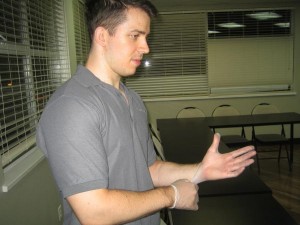
Compartment syndrome is a life-threatening condition wherein following a fractured injury of an extremity there isn’t enough blood supply circulating to the muscles and nerves with oxygen and nutrients because of the increased pressure within the compartment such as the upper and lower extremities or any enclosed space within the body which results to nerve damage due to the lack of blood supply.
Compartment syndrome normally occurs within an anatomic compartment which is an area of the body encased by bone or fascia (fibrous membrane that covers and separates muscle tissues) that contains muscles, nerves and numerous blood vessels. The human body has 46 anatomic compartments and 36 of these are located in the extremities. Compartment syndrome occurs when pressure within a compartment is greater than normal. There are three major types of this fracture complication namely acute, chronic and crush compartment syndrome.
Acute, chronic and crushing compartment syndrome
Acute compartment syndrome involves a sudden and severe decrease in blood flow to the tissues distal to an area of injury which results in tissue necrosis if prompt and decisive treatment is not provided. Chronic compartment syndrome is characterized by pain, aching, tightness in a muscle or a muscle group that has been subjected to inordinate stress or exercise. In this instance, muscle volume increases by as much as 20% within a short span of time resulting in stretching of fascia and inflammation. Crush compartment syndrome is caused by massive internal compression or crushing of a compartment; for example, this may happen when an individual is crushed by the impact of a head on collision, the effects from the horrendous injury includes rhabdomyolysis (damage to skeletal muscle tissue) which causes acute renal tissue that may eventually lead to multiple organ dysfunction syndrome.
Symptoms of compartment syndrome in general
The patient suffering from any of the above mentioned classification of compartment syndrome will typically complain deep, throbbing and unrelenting pain, which continues to increase despite the administration of opiates and seems out of proportion to the injury. The hallmark sign is generally pain that occurs or intensifies with passive range of motion. The pain is caused by a reduction in the size of the muscle compartment because the enclosing muscle fascia is too tight or a cast or dressing is constrictive or there is an increase in compartment contents because of edema or hemorrhage resulting from fractures, burns or venomous bites/stings from critters. The lower leg is most frequently involved, but the forearm is also within the range of risk as well.
Emergency medical management of compartment syndrome
Prompt management of this complication in fracture healing is very
essential. The physician involved should be notified as soon as possible if neurovascular compromise is suspected. Any delay in treatment may result in muscle damage and even tissue necrosis. This complication is managed by elevation of the extremity to the heart level and release of constrictive devices such as dressings and casts. If such conservative measures do not restore tissue perfusion and relieve pain, surgical procedure known as fasciotomy (surgical decompression with the excision of the fascia) may be needed to relieve the constrictive muscle fascia. Following the procedure, the affected extremity is splinted and passive ROM exercises are performed every 4-6 hours for the next 3-5 days when the swelling caused by compartment syndrome has already subsided.
